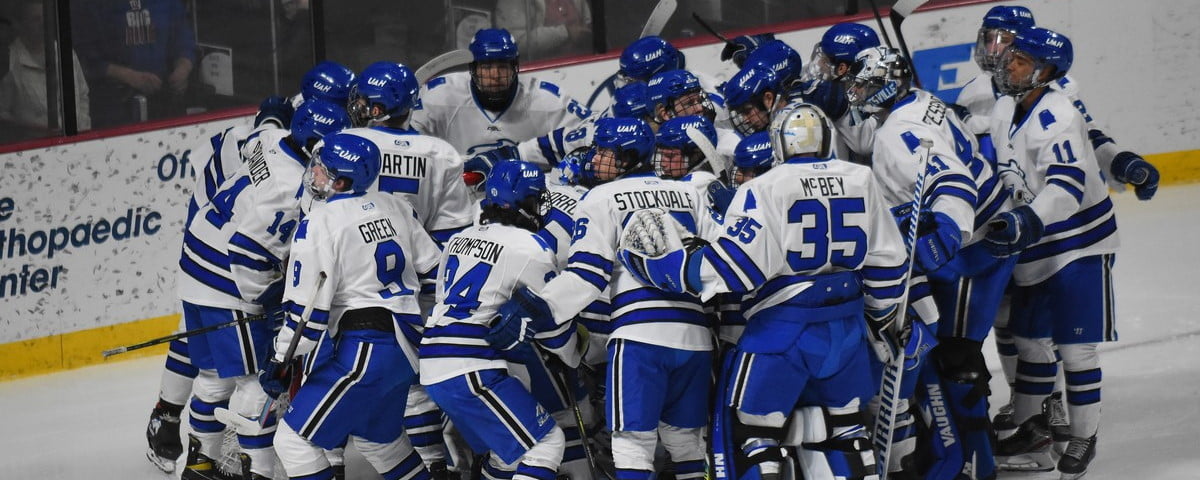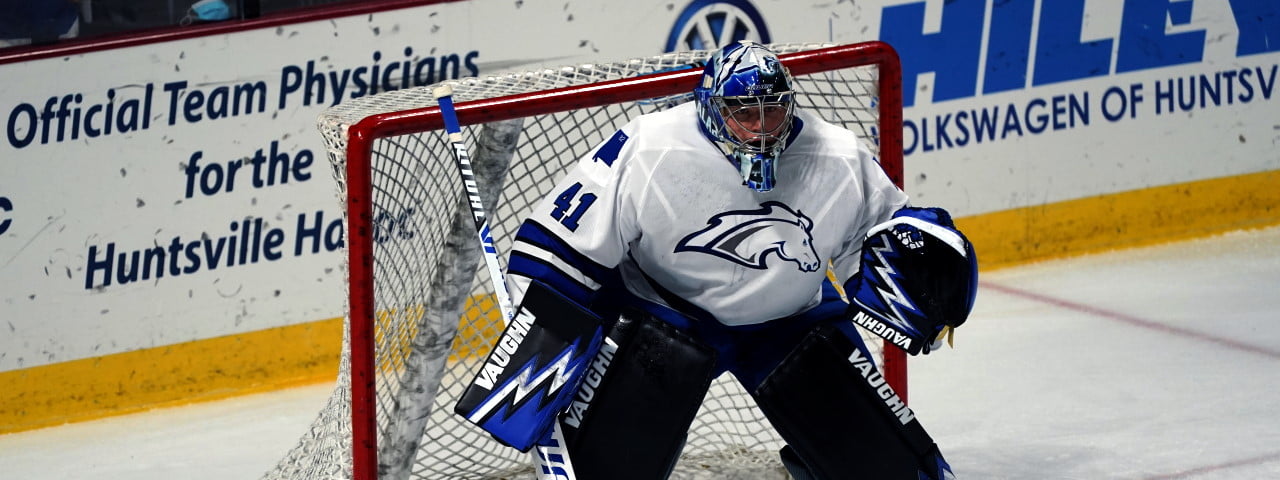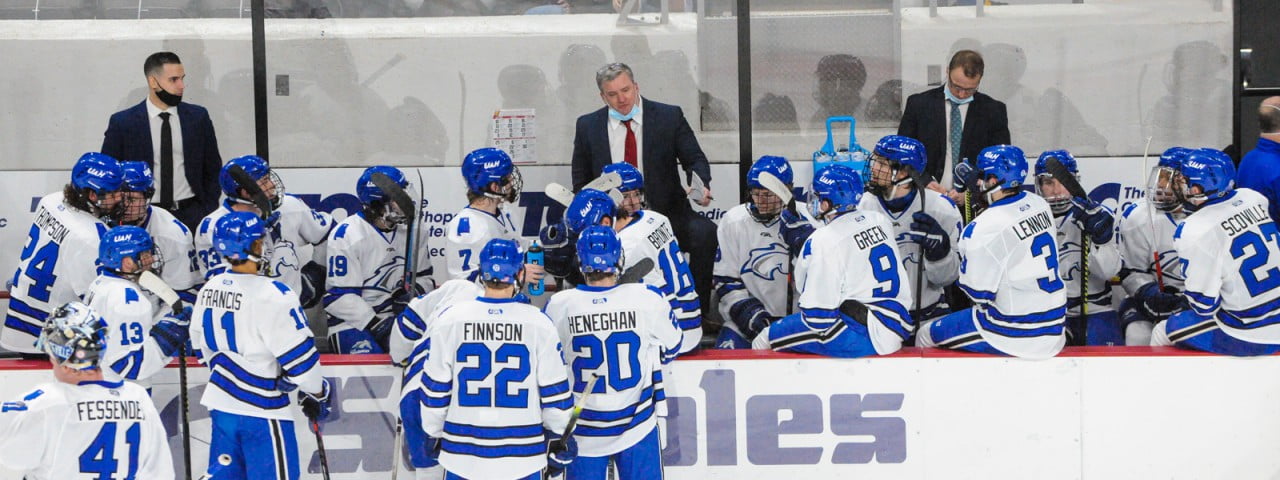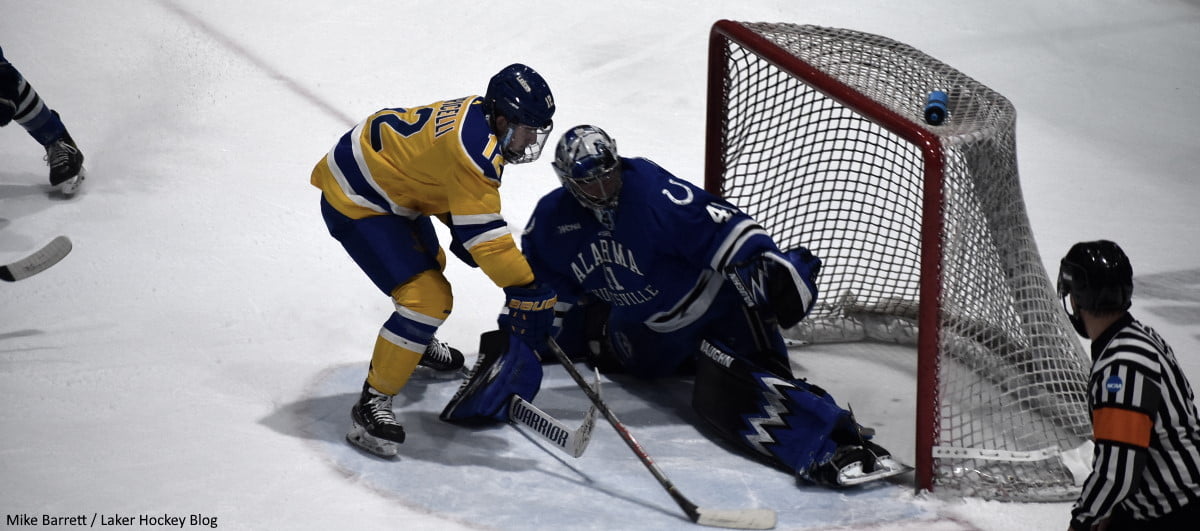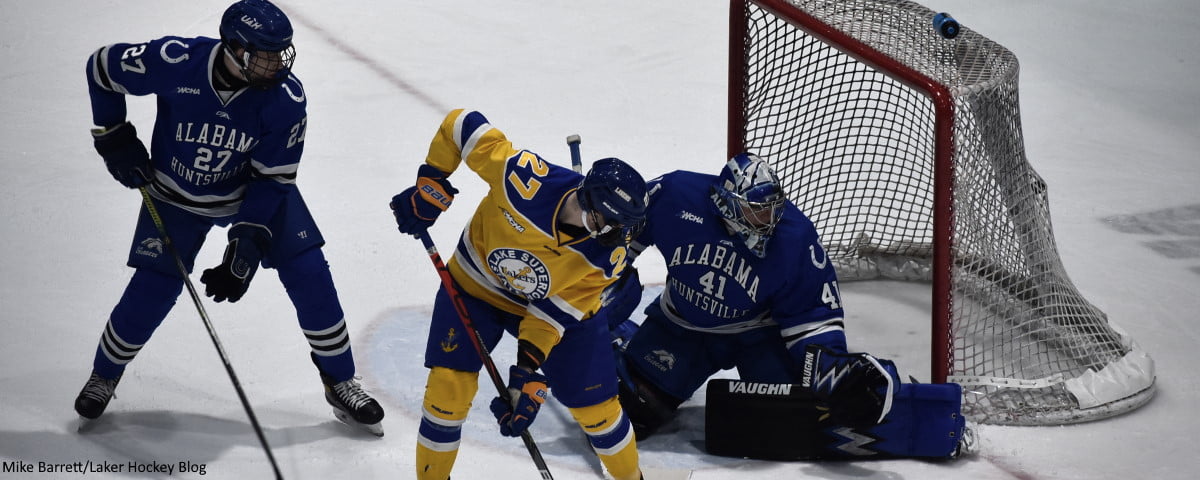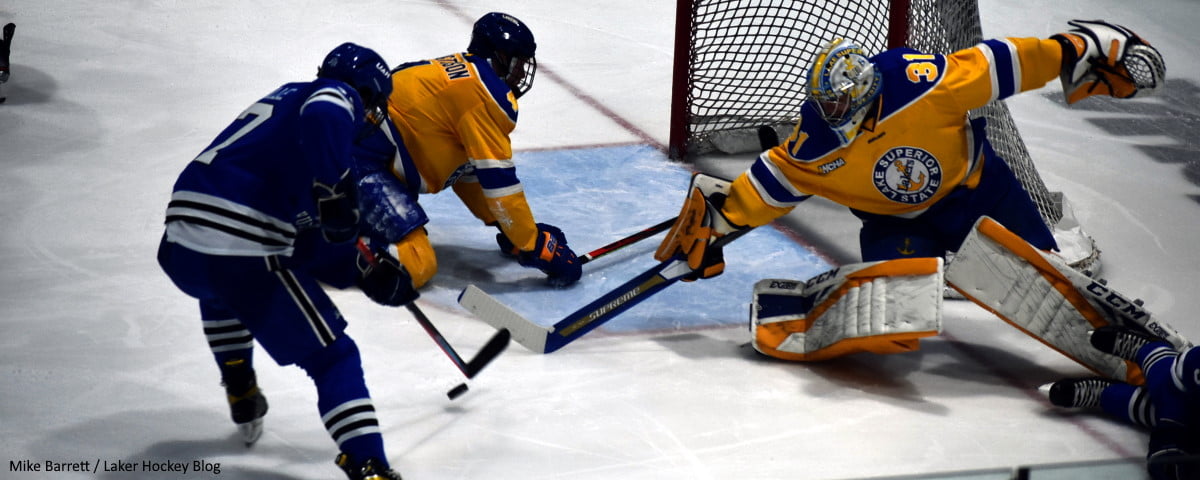Perhaps in some alternate universe, UAH was accepted by the CCHA.
Not the new CCHA, the conference formed by most of the old WCHA and St. Thomas, but the original CCHA, which featured Michigan and Notre Dame and voted to deny UAH’s bid to join the league on August 11, 2009.
In this alternate timeline, the Chargers avoid playing as a Division I independent from 2010-13. UAH then joins the WCHA along with the other CCHA leftovers when the Big Ten and NCHC break off and form in 2013. Events play out as they do in this reality: Seven schools leave the WCHA to form the new CCHA, leaving UAH and the Alaska schools behind.
If UAH didn’t have to play as an independent then, would they be playing as an independent now? UAH has made it clear that it will not play as a Division I independent without a bid in tow.
The 2021-22 college hockey regular season gets under way this weekend with the Chargers sitting out after failing to secure conference membership, and the troubles that came with playing as an independent back then are a big reason why.
UAH’s previous experience as a Division I independent
UAH was a Division I independent from 1987-92, but the Chargers didn’t play a full Division I schedule. UAH played a handful of Division III and Canadian schools. There was a route to the NCAA tournament, however, with the independent teams playing their own tournament with an automatic bid on the line (UAH actually hosted this in 1991), so not being in a league was not as important as it is today.
The better comparison to today’s situation would be just over a decade ago, when the original CCHA’s decision not to accept UAH left the Chargers without a home after the 2009-10 season, the last for the men’s College Hockey America.
In the final season of the CHA, the Chargers had a 12-18-3 record, rolling with future NHL goaltender Cam Talbot and winning the final CHA tournament for their second NCAA Division I tournament berth. UAH fought hard against No. 1 Miami but lost 2-1.
There were already suggestions that the future of the program was in doubt, but UAH opted to continue the program as a Division I independent. It did not go well, as in the 2010-11 season, UAH won four games. In 2011-12, the Chargers won two.
It didn’t help that UAH played mostly on the road. In the 2010-11 and 2011-12 seasons, the Chargers only played 20 of 63 (31 percent) games at the Von Braun Center. UAH’s home season was usually over by early January.
All that was before UAH had to be saved the first time in 2011, and the stigma of being a program on the ropes that came with it.
The 2012-13 season schedule was scrapped when the program was canceled in October 2011, and had to be built from scratch after it was saved in December. In 2012-13, UAH played only five home games (that weren’t exhibitions against club teams or the USA Under-18 team) with three against Division III opponents. The Chargers played 18 games on the road.
Even during the WCHA era, UAH had trouble bringing in non-conference opponents down to Huntsville. From 2013-20, the Chargers played only eight non-conference games (four series) at home. One of those series, against St. Cloud, was basically a favor to Huntsville native Nic Dowd, who was a senior with the Huskies at the time.
It’s extremely difficult for a program like UAH to overcome these obstacles and field a competitive Division I program as an independent. We know the funding is there, but it can be moot if you cannot build a fanbase with home games or tell recruits that they will have a championship to play for.
And this is why UAH chose to pause the program instead of going the independent route again.
Being an independent today
Would things be different for UAH as an independent now than from 10 years ago? Back then, UAH was the only Division I independent. Now there are five.
Alaska Anchorage and Alaska Fairbanks, the two others the schools in the new CCHA left behind, are attempting to continue their programs as independents. Anchorage plans to resume play in 2022-23 after saving its program from the cutting block. Fairbanks is playing this season.
Fairbanks can be commended for securing 14 home games as an independent this season, already more than UAH could manage in the early 2010s. Can the Nanooks keep that up? Having Anchorage back should help, but the Seawolves and Nanooks can only play each other so many times.
Both programs last played as independents almost 30 years ago, when the economics of college hockey were more conducive for it. It will be interesting to see if they will be able to build competitive programs with the same barriers UAH had to deal with a decade ago and the additional distance from their locations.
Long Island University, which started play last season, had a scheduling alliance with Atlantic Hockey last season but has not been able to become a permanent member. This season, the Sharks will play 11 out of their 36 games at Northwell Health Ice Center, the training facility for the New York Islanders, but only five of those games are against Division I opponents (the rest being Division II).
The one program that has seen some success as an independent as of late has been Arizona State, which is entering its seventh season of play. In 2019, the Sun Devils became the first independent to make the NCAA tournament since 1992, when Alaska Anchorage got an automatic bid through that Division I independents’ tournament.
ASU has stayed independent in part because its primary facility, Oceanside Ice Arena, which has a capacity of only 747. The Sun Devils also plan to open a 5,000-seat, on-campus arena by the end of next year, and it would not be surprising to see them in a conference soon. ASU is also a Power 5 school with an enrollment and an endowment 12 times that of UAH, so it’s an unfair comparison.
What options does UAH have?
UAH needs a conference affiliation to restart the program. What options are there?
UAH can hope Atlantic Hockey will re-open discussions on expansion. If successful in its fundraiser, a restarted Robert Morris program will apply to re-join Atlantic, and UAH could try again to become the 12th team.
The CCHA has maintained that it’s content to stay at eight teams. It’s unlikely they will listen to UAH’s proposals in the near future, but it would not hurt to try should the opportunity arise.
UAH officials and the alumni group have said they believe that further realignment is coming, which could open an opportunity for the Chargers to join a conference and resume play. It’s unknown when that realignment would take place, though, leaving options limited.
One thought is: What if the programs without a conference decide to form their own?
Not including Arizona State, which is its own level compared to other independent programs, there are four schools at this moment without a league: UAH, Alaska Anchorage, Alaska Fairbanks, and Long Island. There are two schools who are reportedly close to announcing new varsity hockey programs soon: Augustana (S.D.) and Lindenwood (Mo.). That’s six teams that could conceivably form a league. If Robert Morris saves its program but can’t get back into Atlantic, that’s seven.
Such an arrangement would be similar to the formation of the men’s College Hockey America in 1999, which brought in three Division I independents (Army, Air Force, Niagara), three programs moving up from Division II (UAH, Bemidji State, Findlay), and one new program (Wayne State).
The upside: It’s a league, at least. Guaranteed home games and a path to the NCAA tournament. The downside: Such a far-flung league would have serious travel costs. Like the original CHA, it would only take a couple of schools to find new conferences with better travel situations to bring it down.
Maybe that’s all this new league needs to be, though: a temporarily solution until Division I hockey figures out how to work for schools like UAH, whose only other option is to fold forever.
Or bring back the Division I independents tournament and give them an automatic bid to the NCAAs again (ha). That would solve the “something to play for” problem, at least.
This is all speculation, however. Maybe there are plans coming together that we’re not yet privy too. But whether the Chargers are playing this season or not, the future is cloudy.

